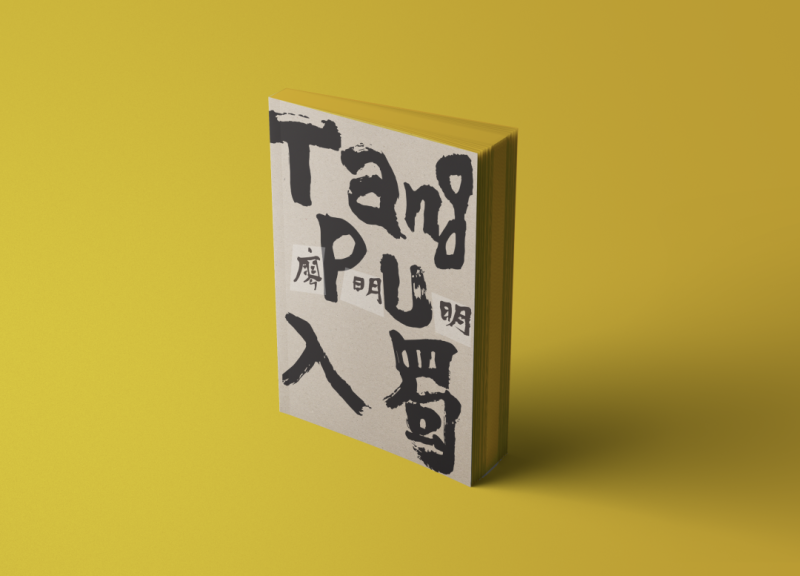In the Six Dynasties period, Zong Bing wrote, “The cliffs and peaks rise to dazzling heights and the cloudy forests are dense and vast; the wise and virtuous men of ancient times found innumerable pleasures which they assimilated by their souls and minds.” He was already articulating a theory of landscape painting, although it could not be compared to later landscape paintings that had their own aesthetic significance. After gradual development in the Sui and Tang periods, landscape became truly independent of figures, oxen, and horses by the Song dynasty. As Guo Ruoxu wrote, “With regard to Buddhist and Daoist figures, palace maids, oxen, and horses, the recent is inferior to the ancient. With regard to mountains, waters, forests, stones, flowers, bamboo, and birds, the ancient is inferior to the recent.” In the Song and Yuan, not to mention the Ming and Qing, dynasties, artists pushed landscape painting to the peak of perfection, but this was not simply a change in an art form or creative methodology; philosophical ideas based on economics and real life informed this complete system of visual symbols.
For modern people confronting different landscapes and moods, what kind of experience should shanshui (traditional Chinese landscape painting) offer? Can you imagine the landscape one thousand years ago? Here, in the black and white, as well as the countless subtle shades of grey, mountains and waters are identifiable yet unidentifiable. In a space in which time stretches infinitely, they seem to represent a vast, level distance, calm yet melancholy. The depicted past and present seem to turn the clock back to the golden age of melancholy landscapes. Perhaps because of the assumptions of histories and anecdotes, ceremonies and traditions, these landscapes attempt to reveal power. The Western cast bronze sculpture and the porcelain incense box with bird feather patterning cannot be described precisely with words. There are also scenes comprised of different times, objects, and people that collectively constitute the place in which you find yourself.
Liao Mingming has called some of his recent work “Tangpu,” developed around his painting, collections, and lifestyle. Liao was born in Anhui, and he began studying calligraphy and painting at a young age. After graduation, he worked at an art magazine and he studied ancient calligraphy and painting, as well as porcelain, gardens, opera, and tea. He often engages with the past and present through traditional Chinese landscape painting. Like the majority of Chinese artists living in this era, he is experimenting with languages, methods, backgrounds, and materials while confronting the mediums of traditional art and the context of contemporary art. When engaging with the style and scope of landscape, Liao Mingming is moved by tradition, but he similarly realizes that, as a modern person, the genre must change, and he actively seeks out ways of transforming traditional visual content and presentation methods. In a way, he chooses to begin from his own way of life, condensing an exploration of ancient sources in space and integrating life experience. Full of traces and reflections, these objects, works of art, and the stories they inspire shape his way of engaging with and understanding landscape. Liao Mingming returns to landscape from landscape, which was his way of looking after himself.
Landscape is the source of “Tangpu,” which became Liao Mingming’s way of interpreting traditional culture and engaging with everyday life. The project is not limited to aesthetic pursuits; it is more often a spiritual or values judgment. Here, I do not see it as a simple image or referenced text; it is a process of considering and advancing subjective identity. This stems from the complexity of the classical Chinese landscape, but the project also involves more complicated backgrounds and references in the context of contemporary art, as well as the ambition that Liao expressed when he initiated “Tangpu.” The diversity and complexity of the project has already transcended the content of two-dimensional painting. These are the advantages and challenges of “Tangpu” as an artistic entity. The discussions that it could inspire, specifically in combination with the museum as a public space, gives the idea the ability to expand outward. The project has more possible meanings and discussions than conventionally-presented works, but it will take time before we can give it a precise definition.
Liao Mingming’s work is rich and deep, and in his artworks, we can see the influence that the ancient sensibility has had on him. He sees his work as an obsession with spiritual cleanliness, engaging more deeply with the evaluation, appropriation, and transformation of traditional sources from the perspective of cultural spirit. He freely uses the language of ink to reveal his sensory world, expressing a focus on life, an appraisal of tradition and modernity, and an understanding of everyday life. Today, Liao Mingming once again comes to Chengdu. In Twenty Frames, we see that “the wind blows away the mist and the obstructions to painting.” Bu Cun Zai (meaning “it does not exist”) conveys the sense that “the unrestrained, leisurely mind accords with heaven, earth, and all things.” Dongpo braised pork belly also makes an appearance at the banquet; as they say, “Mild is the fire, shallow is the water, give it time, and it will be divine.” Feeling, consciousness, flavor, and taste are what really brought “Tangpu” to Sichuan.

